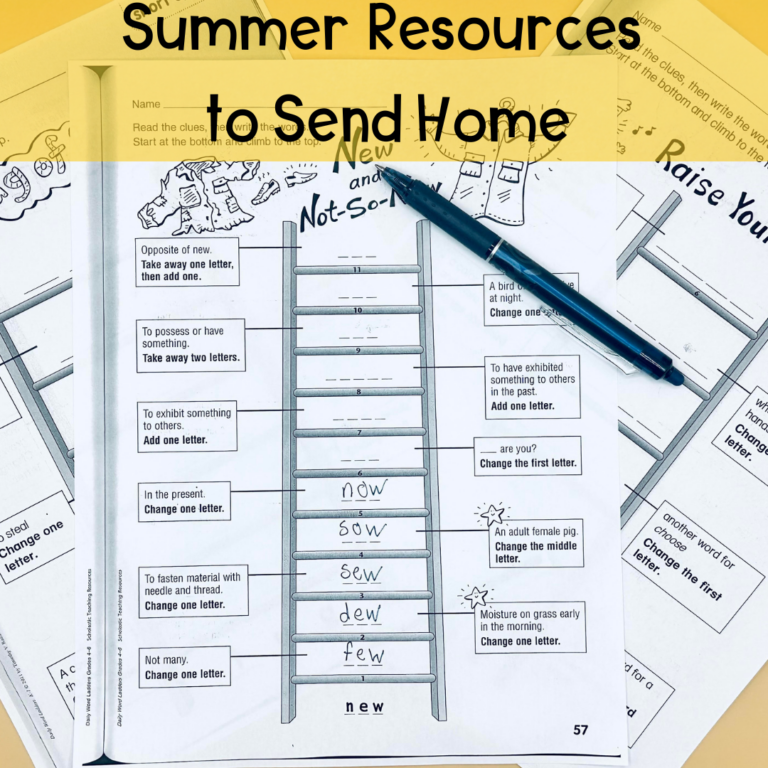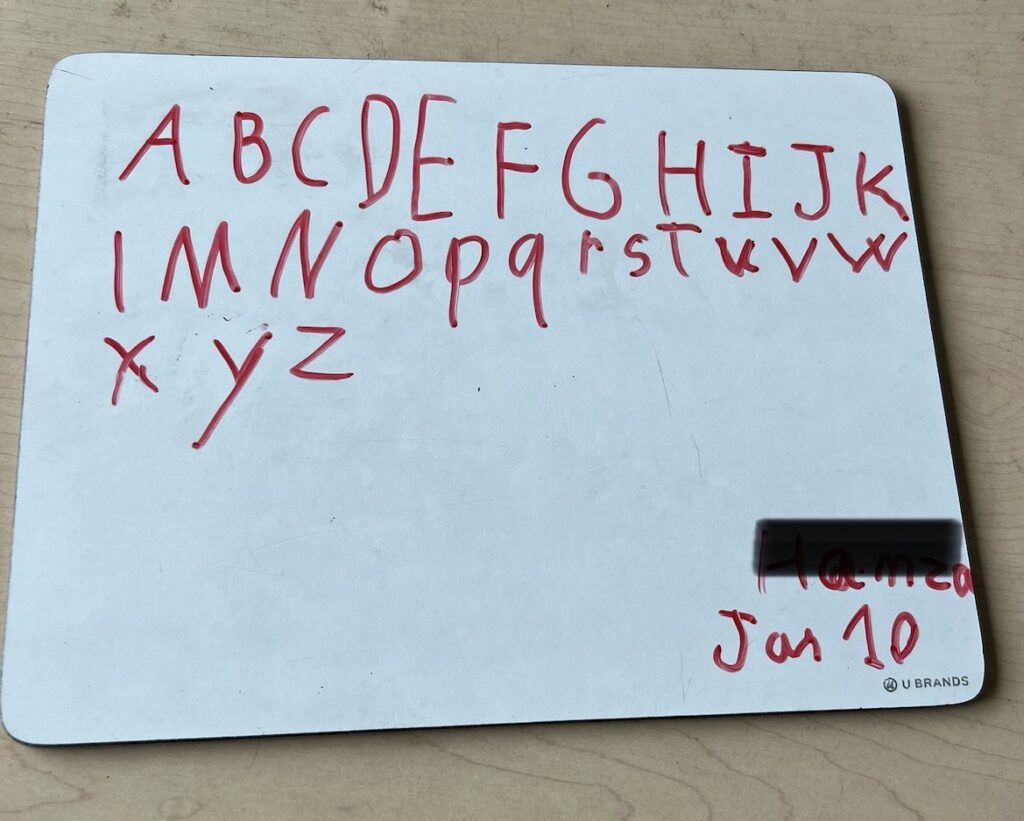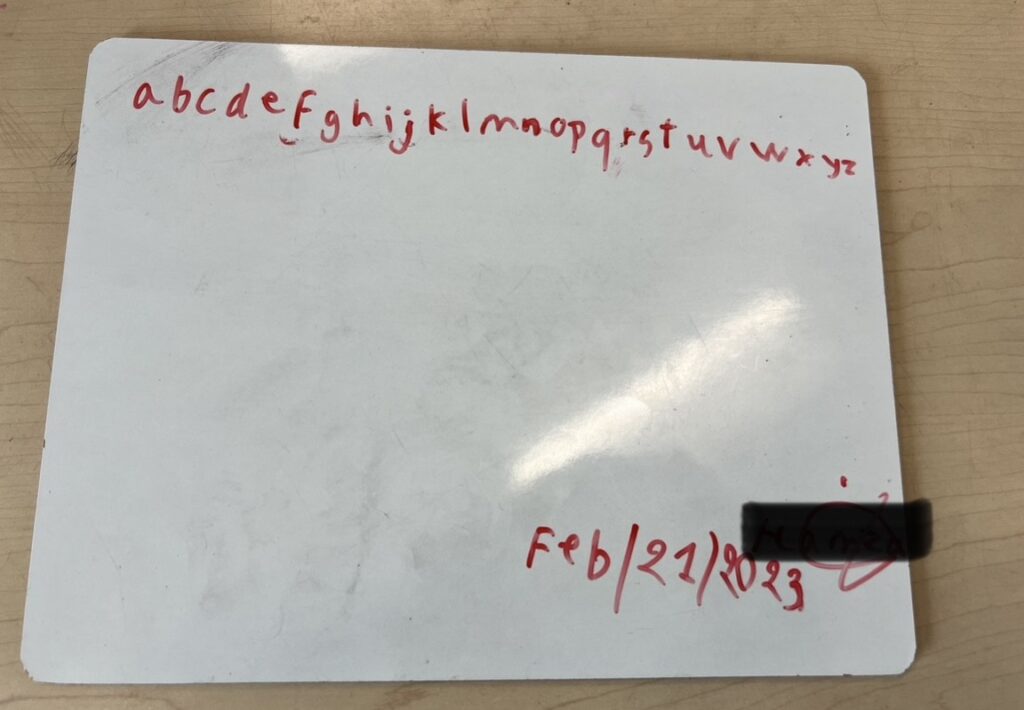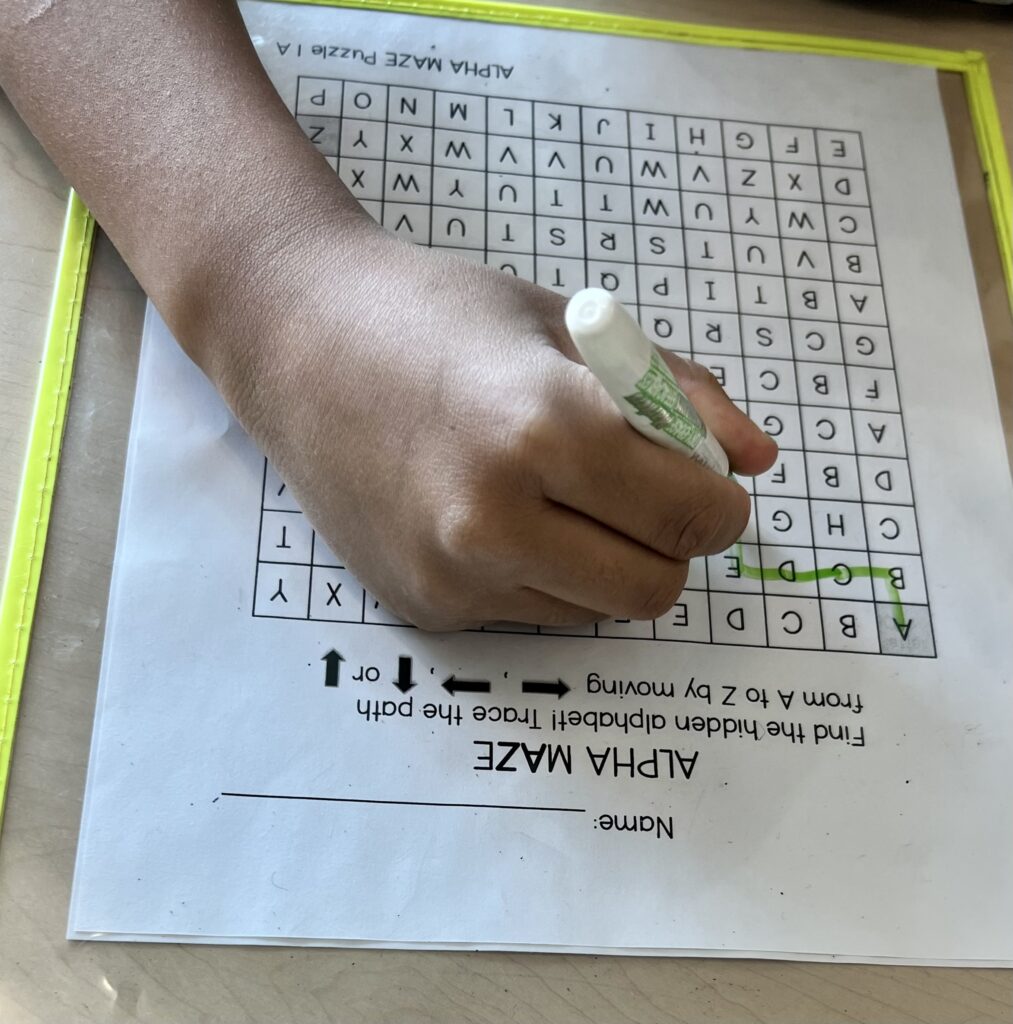
Share This:
I am so excited to announce that Tracey Tinley is BACK to share more about how she honors her older beginning readers. She recently shared about engaging ELLs who are beginning readers, and this week she’s sharing several alphabet games she plays with her students. If you have struggling older readers, this blog post is one you HAVE to read.–Savannah
We are told not to judge a book by its cover, but we know our students do this all the time when it comes to the activities and worksheets we give them in our classrooms. When working with older students at beginning levels of literacy this snap judgment can be especially problematic. The resources we find are often geared toward much younger students.
Whether it be the clipart, or the general premise of the activity itself (think alphabet train cars), it can highlight the size of the gap in our older students’ learning and further solidify a lack of engagement. Worse yet, it may cause our students embarrassment if the activity is something they are completing in view of their peers. In my previous blog Older Beginners: Engaging ELLs at Beginning Levels of Literacy, I shared the important role that the alphabet plays with my students who are learning English for the first time. While the games shared here have been designed to meet some specific needs of English learners, they can be easily adapted for partner or small group use within a range of classrooms. With just a few simple shifts, these rebrands can turn traditional alphabet activities into ones that even your most reluctant students will be intrigued by.
My Alphabet Challenge routine was inspired by a post of Savannah’s back in the fall. In it, she suggests one way to begin with SOR, if you aren’t sure where to start, is to get your students to write the alphabet every day. I remember how surprised I was by what I saw when I first asked my students to do this. For many of them, the act of printing letters wasn’t even coming close to a level of automaticity that would set them up for later more complex writing tasks. We needed practice but a lot of my go-to printing practice routines (e.g., rainbow letters, printing books) felt much too young to get the buy-in I would need to make this a daily routine.
I decided to gamify the alphabet in a way that students would track their progress for a month in an attempt to reduce their “score” – aka the amount of time it took to write the letters from A to Z. Rebranded as an Alphabet Challenge, students would grab a whiteboard as they entered my room and practice writing out the alphabet. Once all my students had arrived and had had an opportunity to do an initial run-through, we got the timer ready and wrote the alphabet once more. Student times were then recorded and tracked on a post-it note that I kept on my desk. If a student managed to shave a few seconds off their time, the old score was crossed out and the new one was recorded.
A word of caution: this is not Alphabet Challenge “to the death”. We should not be using these times to rank and order students, and we can not allow the students to pit their alphabet knowledge against one another. The role of the timer is to provide the diversion of the game element, but also for students to see the tangible positive effects of literacy practice. They are competing against themselves – not each other. Every student I have used this routine with has made noticeable progress. It is often your most at-risk students that will see the biggest improvement as they are the ones who were likely the most inefficient at the start.


One of my key observations from watching students during the Alphabet Challenge routine was their over reliance on having to sing or rote recite the alphabet from the beginning. A number of my students were taking almost a minute to simply write the 26 letters out because they were constantly having to restart to recall the letters that came next. They didn’t seem to have the ability to “letter on” from different starting points of the alphabet and this was a significant roadblock for them. We needed a game that would move us from rote alphabet recall to thinking more flexibly about letters and their order.
In the game Alphabet Takeover, students will use small sets of alphabet cards to build their alphabet. This can be done on a student desk or the floor depending on the size of the cards. Once the alphabets are complete, students will find an alphabet different from their own to “take over” A takeover consists of a student removing letters from an alphabet and holding them in his/her hand. The owner of the alphabet must then quickly scan the alphabet to determine which letters have been taken. The goal here is for students to develop (or strengthen) the skill of being able to tell which letters are missing without having to rote-recite the entire alphabet. A variation on this game can also be used to review letter sounds. Instead of naming the missing letters, a student may be asked to produce the letter sounds instead. This variation has the added advantage of promoting both students in the partnership to work together to make the connection between grapheme and phoneme.
Sometimes a game will lead you on a path you never thought it would. This has been my experience – both literally and figuratively – in our most recent classroom experiences with Alpha Mazes. The origin story for this activity was that I needed something new for students who had mastered the Alphabet Challenge game. I didn’t feel we were ready to abandon our letter work completely yet. My students still needed to increase their flexibility with “lettering on” and more opportunities to discriminate between letters that appear visually similar (e.g., P/B, V/W/Y, b/d, p/q). I also noticed that I had students who continued to use a blend of upper and lower case letters when printing – even within an individual word.
I attempted to find a maze-type puzzle online but this proved to be a lot more difficult than I thought. Sure there were alphabet mazes out there, but nothing even close to being engaging enough to get my older student’s stamp of approval. In many cases, the mazes I found didn’t even really feel like mazes at all. More like an A to Z pathway you could already see even before you started.
The mazes I ended up creating had multiple levels of challenge built in so that I could adjust them based on student needs. Some students would get mazes where the beginning and end (i.e. the A and Z) were clearly defined, some might just get the A at the start, and others would be left completely on their own. I was surprised to see how much of a difference this small tweak made. Regardless of the level of difficulty, every maze was designed to trick and trap students. I watched students follow what they thought was the correct alphabet path only to groan in delighted frustration when they hit a dead end. I noticed them strategizing when it was clear there could be multiple possibilities to follow within a maze and gently encouraged them to “letter on” from multiple letter points rather than head back to the start. These mazes took my classroom by storm and each day my students asked me for more.

There weren’t enough hours in the day to keep up with the demand for these mazes so I decided to teach the students how to make them. I gave them my tips for how to trap people and watched as they potted and schemed their way through the alphabet. The unexpected bonus here was that now I could use these mazes to stress the importance of proper letter formation. The grid paper I used supported a shift in the size of some of the larger handwriting of my students. Students who were consistently mixing and mingling their upper and lower case letters were now forced to pick a lane when creating their puzzles.
In one particular situation, I asked a student who rarely used the lowercase t in his daily writing to make lowercase letter mazes. After creating three puzzles, and erasing capital T over and over again, that elusive lowercase slowly began to make appearances in his classroom writing. A set of upper and lowercase mazes can be found here along with tips and a puzzle template to support your students when making Alpha Mazes on their own.
A big part of the success of my games comes from the excitement you use to sell them. We know that a key component of classroom management and buy-in is always engagement and alphabet tasks are no different. I’m passionate about my gamifying mission of early literacy activities and the impact I am seeing it have on my older students. By diverting student attention away from the fact that the work they are doing is at a very basic level, we pay deference to their age-level maturity and honor the self-esteem of these more seasoned learners. Just because their literacy level is at a beginning level, it doesn’t mean that their tastes and interests are. For many, their literacy journey has not been an easy one and we owe it to them to make it as engaging as possible – one alphabet game at a time!
Tracey Tinley is an experienced Canadian teacher and presenter. With over twenty five years of teaching under her belt, she has worked with students in all the grades from K-6. Tracey has served as an instructional coach, lead writer with The Critical Thinking Consortium (TC2), and as a seconded professor at the Faculty of Education for the University of Ottawa. In 2015 she received the Prime Minister’s Award for Teaching Excellence. She has presented workshops across Ontario for conferences such as Reading For The Love Of It (EYS Reading Association). Her writings and teaching reflections have also been featured in Educational Leadership magazine (ASCD). Tracey continues to teach, laugh and learn alongside her ESL students and teacher colleagues in Ottawa, Ontario Canada. You can find her on Instagram @ideashoppd.
Share This:

Savannah Campbell is a K-5 reading specialist. She has taught her entire 12-year teaching career at the school she went to as a child. She holds two master’s degrees in education from the College of William and Mary. Savannah is both Orton-Gillingham and LETRS trained. Her greatest hope in life is to allow all children to live the life they want by helping them to become literate individuals.

Savannah Campbell is a K-5 reading specialist. She has taught her entire 12-year teaching career at the school she went to as a child. She holds two master’s degrees in education from the College of William and Mary. Savannah is both Orton-Gillingham and LETRS trained. Her greatest hope in life is to allow all children to live the life they want by helping them to become literate individuals.
Feeling overwhelmed with all the terminology out there? Want to know the key terms all teachers need to teach phonics? In this FREE Rules of English cheat sheet, you get a 5 page pdf that takes you through the most important terms for understanding English—you’ll learn about digraphs, blends, syllable types, syllable divisions, and move. Grab today and take the stress out of your phonics prep!
